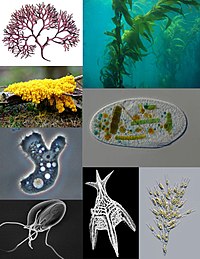
Photo from wikipedia
In the present study, we surveyed the distribution and diversity of fungal assemblages associated with 10 species of marine animals from Antarctica. The collections yielded 83 taxa from 27 distinct… Click to show full abstract
In the present study, we surveyed the distribution and diversity of fungal assemblages associated with 10 species of marine animals from Antarctica. The collections yielded 83 taxa from 27 distinct genera, which were identified using molecular biology methods. The most abundant taxa were Cladosporium sp. 1, Debaryomyces hansenii, Glaciozyma martinii, Metschnikowia australis, Pseudogymnoascus destructans, Thelebolus cf. globosus, Pseudogymnoascus pannorum, Tolypocladium tundrense, Metschnikowia australis, and different Penicillium species. The diversity, richness, and dominance of fungal assemblages ranged among the host; however, in general, the fungal community, which was composed of endemic and cold-adapted cosmopolitan taxa distributed across the different sites of Antarctic Peninsula, displayed high diversity, richness, and dominance indices. Our results contribute to knowledge about fungal diversity in the marine environment across the Antarctic Peninsula and their phylogenetic relationships with species that occur in other cold, temperate, and tropical regions of the World. Additionally, despite their extreme habitats, marine Antarctic animals shelter cryptic and complex fungal assemblages represented by endemic and cosmopolitan cold-adapted taxa, which may represent interesting models to study different symbiotic associations between fungi and their animal hosts in the extreme conditions of Antarctica.
Journal Title: Fungal biology
Year Published: 2019
Link to full text (if available)
Share on Social Media: Sign Up to like & get
recommendations!